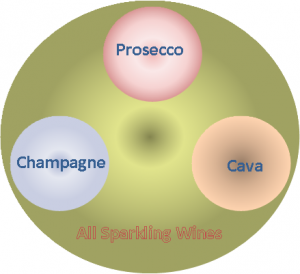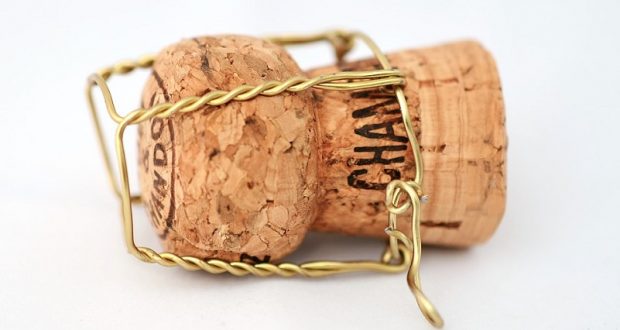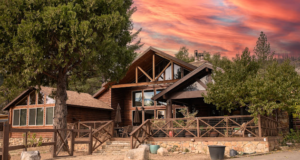 By Karen and Ken Geiszler, Winery-Sage.com —
By Karen and Ken Geiszler, Winery-Sage.com —
So you’re looking for a Champagne for New Years Eve but you’re not sure what to get. Here are a couple of pointers to help zero in on the type of Champagne that you want.
Things may get a touch confusing to start but I promise everything will be clear by the time we finish explaining it and we’ll finish long before you need to get to that party on the 31st.
Also, what’s a little information without a left turn thrown in for fun?
Champagne vs. Sparkling Wine — What’s in a name?
Do you know the difference between Champagne and sparkling wine? Sparkling wine is a general name for wines that undergo a secondary fermentation process to produce the bubbles. Champagne, Prosecco, and Cava are all types of sparkling wines. Most people know sparkling wine by the name Champagne through. However, Champagne can only be called Champagne if it meets one of two strict criteria.
- It’s actually from the Champagne region of France, a small area just north of Burgundy and south of Belgium….or…
- It was made by a California producer (or any other area in the US) and was called Champagne before 2006 when the US and the EU came to an agreement on a host of food and agricultural terms. If a winemaker starting making a sparkling wine after 2006 or stopped and then started back up after 2006, they cannot use the term “Champagne”.
Ok, so we’ve established that just because something is a sparkling wine, it doesn’t have to be Champagne. The other two well-known European sparkling wines came from Italy and Spain. Cava, the Spanish sparkling wine comes from just south of the city of Barcelona in Catalonia. The most famous Cava in the US is Frixenet, not because it is particularly good but because they were very good marketers.
Prosecco comes from a wine region just north of Venice, centered on the village of Prosecco. In the US, Prosecco has a somewhat underserved reputation for being bad Champagne. Nothing could be further from the truth, as we learned while traveling in Italy this summer. Just like any other wine, there are good Proseccos and bad Proseccos. If you are looking for good value for a really nice sparkling wine, we recommend Acinum NV Prosecco. In the some areas, it can found at number of wine shops for less than $10.00.
Incidentally, the French are still somewhat incensed that anyone outside of Champagne can call their sparkling wine “Champagne.” You can kind of see their point. In Europe quite often, the name of a wine is taken from the region rather than the grape type. Their view is how can you call insinuate that something is actual Champagne, if it’s actually from Bakersfield.
So why the dissertation on naming wines when all you want to do is get a couple of bottles to enjoy at a party? Americans tend to use Champagnes as an all-encompassing term, like “Jello” for actual gelatin or “Kleenex” for tissues, but calling all sparkling wines “Champagne” cuts down on a lot of options.
If you’re still going to get Champagne after our shameless lobbying for Prosecco, make sure that you get one that matches your taste. Champagnes are categorized by the amount of residual sugar (the sugar that is still in the wine after it is bottled and fermentation stops or goes dormant). The order of “dryness” in Champagnes, from driest to sweetest are:
Brut Nature
Extra Brut
Brut
Extra Dry
Dry
Demi Sec
Doux
Generally, only those shown in bold lettering are commonly available except in specialty wine shops.
How to open a sparkling wine without it looking like a geyser
One final hint…Champagne can be difficult to open if you don’t know a couple of simple tricks. First, remember that the Champagne cork (or Cava or Prosecco) corks are under high pressure and can be dangerous. A friend of mine, who worked as a bartender, lost her vision in on eye when a Champagne cork popped out of the bottle and hit that eye.
- Always open a sparkling wine bottle pointed away from you and your company.
- Gently remove the foil and don’t shake the bottle. That hyperactive fountain of wine, shown when sports teams win a championship, is just for show and pretty dangerous as well because the shower of champagne is preceded by a cork “bullet”.
- Hold the cork with your hand covering the top to capture it if it decides to emulate a missile.
- Now here is the trick…hold the cork still and gently twist the bottle in one direction while pulling up slightly on the cork. You will feel the pressure on the cork build as the friction between it and the bottle lessens as it begins to come free of the wine bottle neck. Continue turning the bottle and hold the cork tightly until it gently comes free. If you have done it correctly, at most you should hear a small, satisfying “ hiss” of the CO2 escaping from the bottle.
Winery-Sage.com’s Karen and Ken Geiszler wish you a happy new year!
Winery-Sage is an online Winery Encyclopedia designed to help you compare wines, wineries, and regions by using a unique database. Cross-reference varietals and the wineries that produce them, as well as discover events sponsored by wineries and associations. We’re not here to sell you anything or pass you off to paid advertisers, just share the love for wine. Discover California wines at Winery-Sage.com
Karen and Ken have now been married for almost 25 years and to date have still not had a fight since being married, probably because Karen has the patience of a saint. They live in the Silicon Valley area but have had a cabin just south of Yosemite, in the Bass lake area, for roughly 13 years. They spend as much time up here as they can. The first 10 years was just relaxation. The last three has been lots of work recovering from damage caused by the Courtney Fire and then continuing on with a remodel. In 2018, they hope to spend as much as a third of their time up at the cabin.
They are now empty-nesters with their older son being married and living in London with his new wife for the next two years, and the younger one living in Ann Arbor, Michigan, getting his PhD in Bioinformatics. From where he got the brains is a complete mystery but the best guess is the dog. They are not sure what they did to drive their kids so far away but the only consolation is that both sons claim to want to move back in the future.



